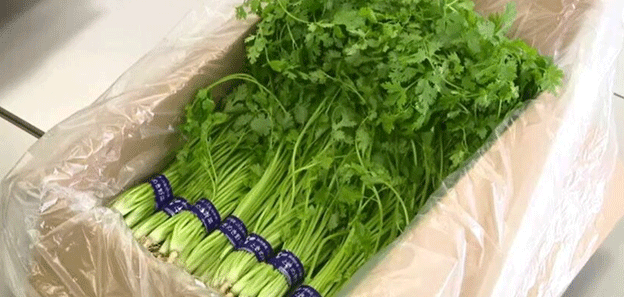In Shizuoka Prefecture, Japan, a region traditionally known for its high-quality greenhouse-grown melons, farmers are undergoing a significant transformation. The rapid increase in fuel prices—up to three times higher than previous years—has made it nearly impossible for many melon farmers to sustain their operations. Faced with rising costs and shrinking profit margins, farmers have made a strategic pivot to cultivating aromatic herbs like cilantro, a crop that is less energy-intensive and more adaptable to current economic conditions.
Greenhouse farming, particularly for crops like melons, requires significant energy input to maintain optimal growing conditions, especially during Japan’s colder months. According to industry data, greenhouse heating costs have skyrocketed in recent years due to global fluctuations in fuel prices. As a result, many farmers found themselves on the brink of financial collapse, prompting them to reconsider their crop choices.
For some, the solution lay in transitioning to cilantro, known locally as “pakuchi.” Eight years ago, a few pioneering farmers in Shizuoka began experimenting with cilantro cultivation, driven by both the economic necessity to reduce fuel consumption and the growing demand for the herb in Japanese cuisine. Cilantro’s shorter growing cycle and lower energy requirements compared to melons have made it an ideal alternative in the face of soaring fuel costs.
The Economic Rationale Behind the Shift
Recent reports from the Ministry of Agriculture, Forestry, and Fisheries (MAFF) reveal that fuel costs for greenhouse operations have increased by up to 300% since 2020. This sharp rise has made the production of energy-intensive crops, such as melons, financially unsustainable for many farmers. On the other hand, cilantro requires far less heating, reducing overall energy consumption and making it a more viable option under current market conditions.
The pivot to cilantro has not only helped farmers mitigate the impact of rising costs but has also turned Shizuoka into one of Japan’s leading cilantro-producing regions. The herb has seen a surge in popularity in recent years, particularly in urban centers where Japanese consumers are embracing more diverse and international flavors. Farmers report that cilantro is now a more profitable crop than melons, with strong sales both domestically and in export markets.
A New Agricultural Landscape in Shizuoka
The success of Shizuoka’s cilantro farmers highlights a broader trend in Japanese agriculture: the need for adaptability in the face of external pressures, such as fluctuating energy costs and changing consumer preferences. This shift has not only saved many farms from closure but has also positioned Shizuoka as a key player in Japan’s aromatic herb market.
In fact, the region’s success with cilantro cultivation has sparked interest from other farmers across Japan, who are now considering similar transitions. Government support, including subsidies for energy-efficient greenhouse technologies, has further encouraged this shift toward more sustainable and economically viable crops.
The transition from melons to cilantro cultivation in Shizuoka Prefecture underscores the resilience and adaptability of Japanese farmers in the face of economic challenges. By embracing a crop that requires less energy and capitalizing on growing consumer demand, farmers have managed to turn a crisis into an opportunity. As global fuel prices remain unpredictable, other regions may look to Shizuoka’s example as a model for how to navigate the complexities of modern agriculture while maintaining profitability and sustainability.










